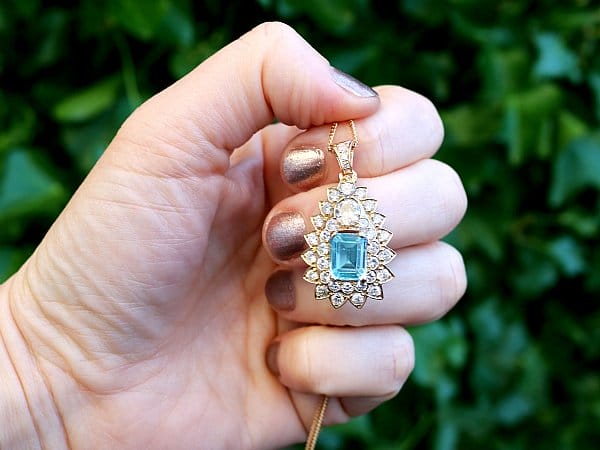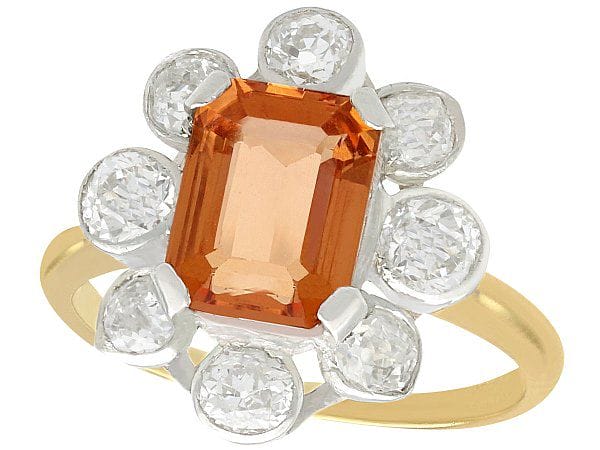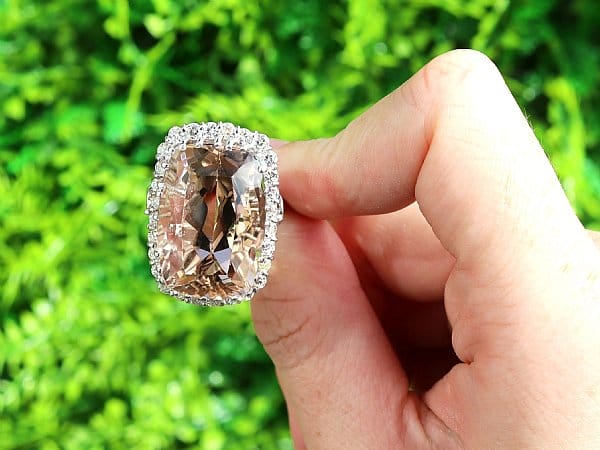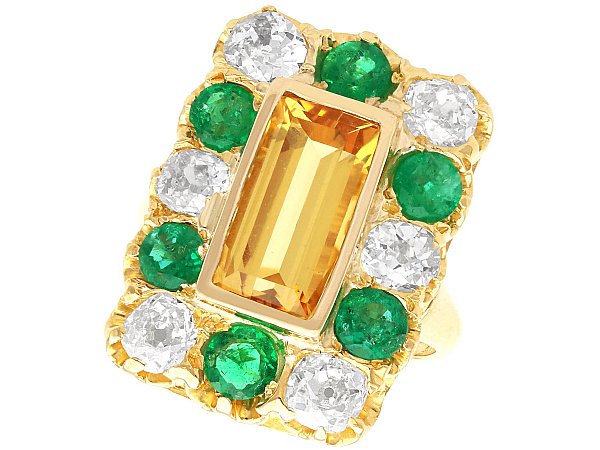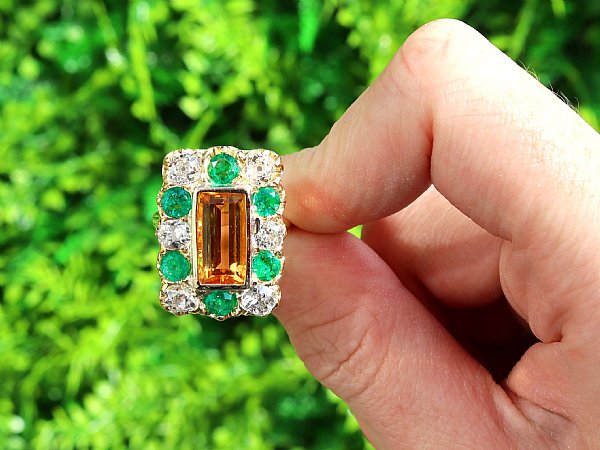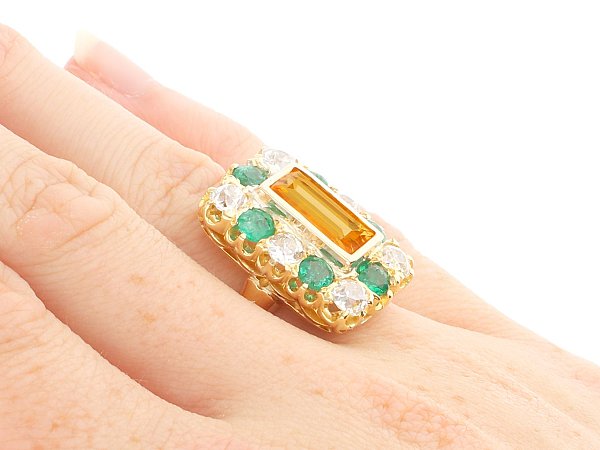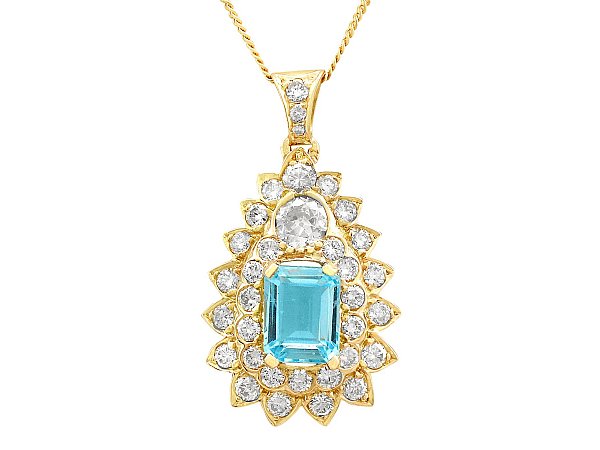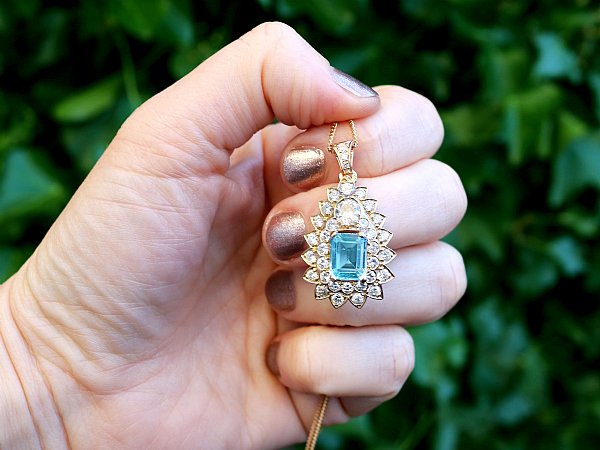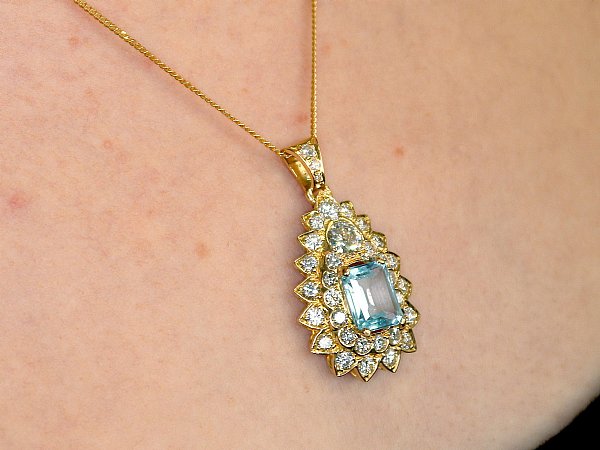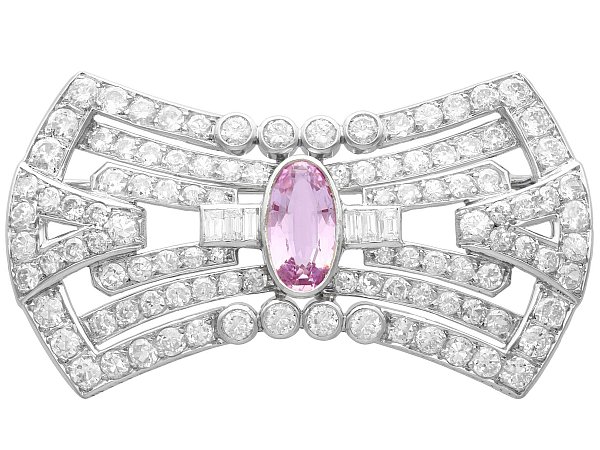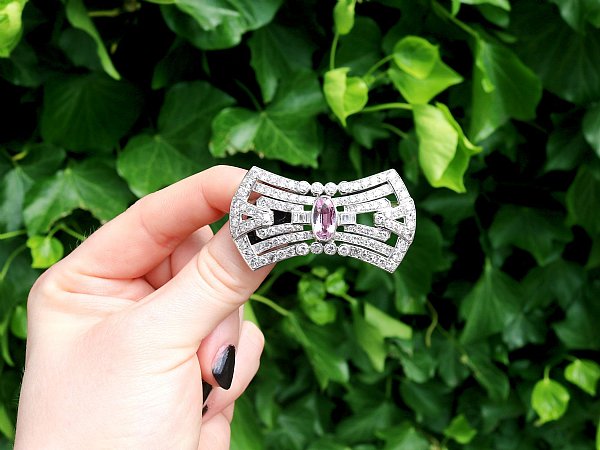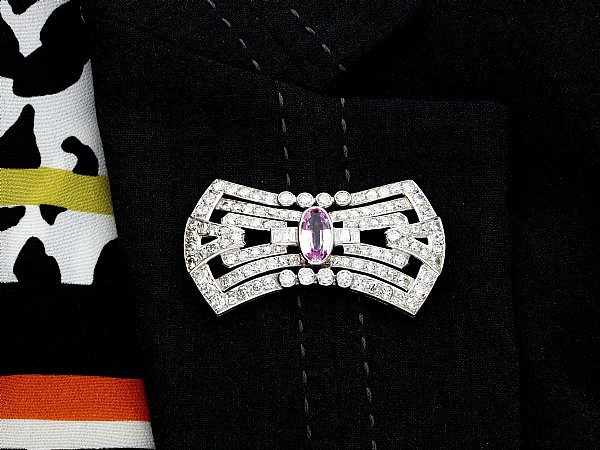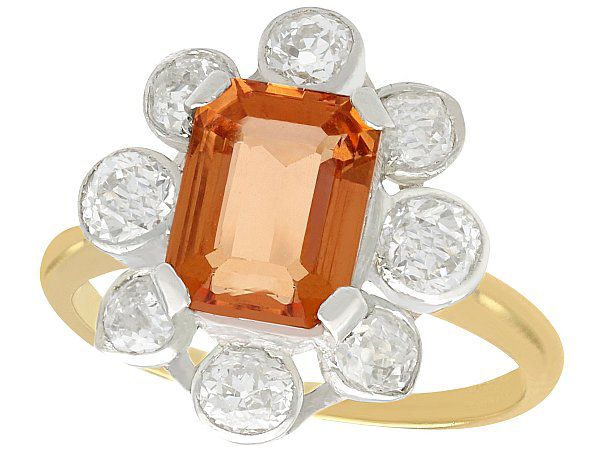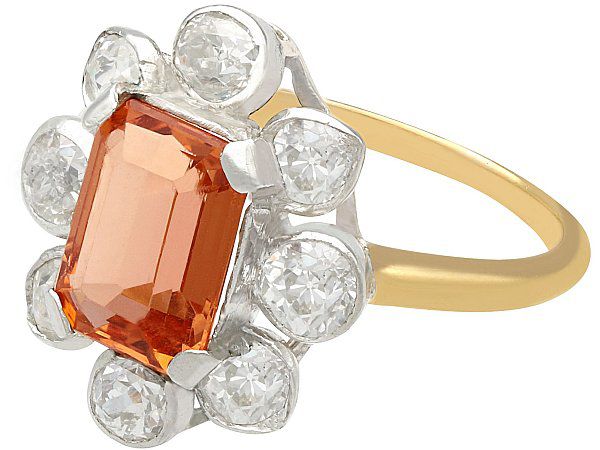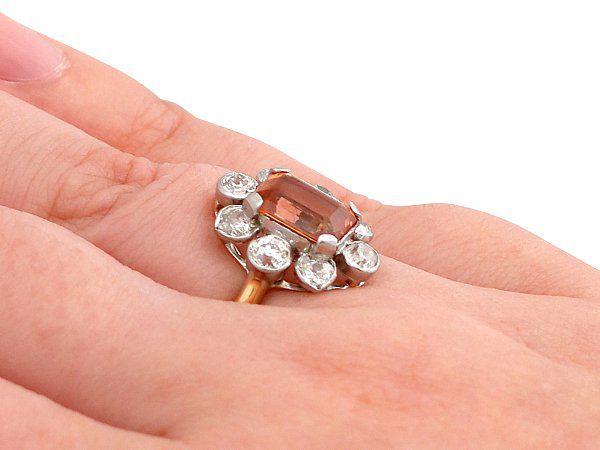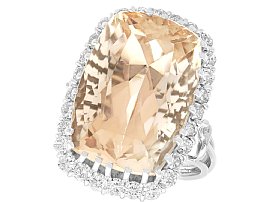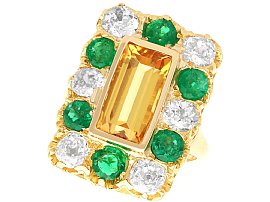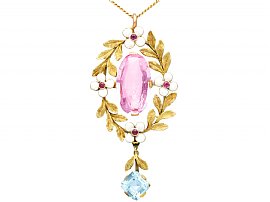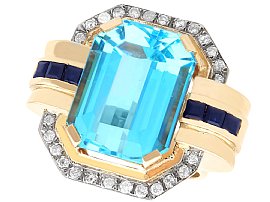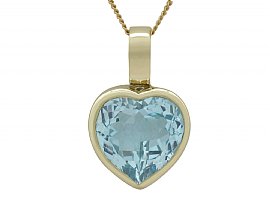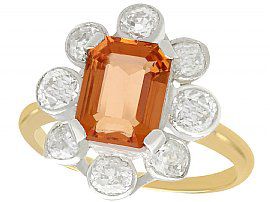History of Topaz
Topaz is an immensely versatile gemstone. One of the November birthstones, this stone is commonly mined, making it a more affordable choice than many other luxury precious gemstones. It is used often in both vintage and antique jewellery, both as a feature gem or a supporting stone.
The History of Topaz
Topaz was first discovered by Romans, millennia ago. Today, topaz is a common gemstone, found around much of the world. The largest producer of topaz is Brazil, responsible for around 75% of the world’s supply. The word topaz has multiple etymologies, likely because of how its use around the world. It is in part Greek in origin due to the mining of yellow-coloured stones on a Greek island once called Topazois, now called St John’s Island. One of the colours most often associated with topaz is the yellow-golden colour of stones found on Topazios, although these were more likely to be olivine than topaz.
Another explanation for the word topaz comes from the Sanskrit word tapas meaning ‘heat’. The term topaz was used in the Middle Ages as a functional name for any yellow stone. Topaz began to be used as a name for a distinct blue shade in 1908. The topaz stone is not only yellow or blue, however. There are many colours for this gemstone.
Topaz is a gemstone that takes many forms of colour. In its most natural state, topaz is mostly colourless. In jewellery, however, it is more often than not blue or a golden-yellow. There are multiple blue topaz shades:
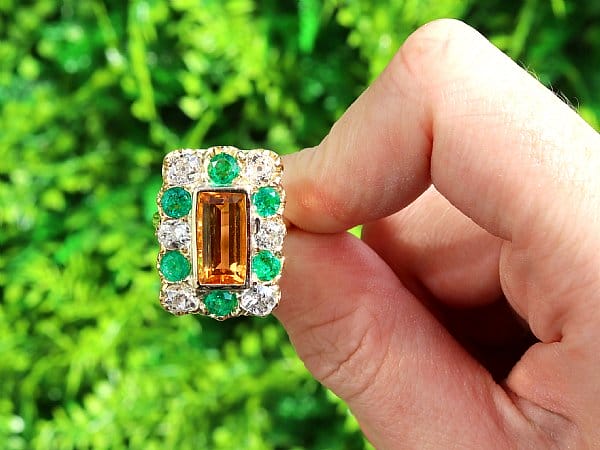
London Blue
This is the name for topaz that is a deep blue colour, similar to navy.
Swiss Blue
Swiss blue topaz is a pale blue colour comparable to sky blue.
Topaz is often treated in order to create a different finish on the stone. Enhanced topaz comes in a range of colours and finishes:
Azotic Topaz
Metal is applied to the outer surface of the stone, creating an iridescent effect.
Mystic Topaz
For this topaz, a coating of titanium is applied to the surface of the stone. The effect this creates is polychromatic, but also vulnerable to scratches.
Russian Imperial Topaz
This is the rarest topaz colour, ranging from a rich orange to a peachy-pink colour. This colour was first discovered in Russia in the 19th century. They were immediately popular with the Imperial family, and it was forbidden for non-royals to wear them.
The Powers of Topaz
Throughout Europe in the 1400s, topaz was used to break spells. Wearing topaz could prevent supernatural forces from impacting you. The stone was believed to have protective abilities, making it very appealing as a defence mechanism. Ancient Greeks believed that the topaz gave them strength. Wearing topaz defends and empowers all in one with these combined beliefs.
For centuries, Indians believed that topaz was connected to the heart. They wore topaz pendants over their hearts to protect them from damage. This stone might not be able to prevent heartbreak, but looking into its sparkling depths is sure to improve your mood.
As a November birthstone, topaz offers more variety than citrine. If blues and pinks are preferred over the golden yellow of a citrine, then topaz jewellery is perfect. This versatile gemstone allows everyone to find the perfect birthday gifts.
Those with November birthdays may be familiar with having citrine jewellery as a birthday gift. The golden-coloured gemstone is the more well-known birthstone for people born in November, but it is not the only one. Topaz has also been associated with November birthstones. This stone is commonly found and is inexpensive in comparison with other precious gemstones, making it popular for jewellery of all kinds.
Topaz is found all over the world, with Brazil being one of the largest producers. The origins of the name topaz, therefore, aren’t thoroughly documented, but they’re likely Greek. A Greek island called Topazios, known today as St John’s Island, featured many mines where yellow-gold stones were mined. Although the stones mined on Topazios were more likely to have been olivine, its colouring has long been associated with topaz. But this warm, yellow colour is not the only variation of topaz.
Different Colours of Topaz
Topaz in its most natural state is colourless, but it in jewellery it is most commonly golden-yellow or blue in tone. The Mohs hardness scale allows a range of minerals to have established levels of hardness. The scale begins with talc having a grade of 1 and ends with diamonds having a grade of 10. Topaz is an 8 on the Mohs scale, making it quite suitable for daily wearing. This is one of many reasons why it is used often in jewellery.
Another reason for the popularity of topaz in jewellery is its wide range of colours. Yellow is the most common, with the common blue colour following close behind. Among the blue shades, there are a few varieties. The deeper blue colour is called London blue, while the lighter – nearly sky blue – shade is called Swiss topaz. Topaz that naturally-occurs as a blue colour is very rare, but white topaz is often treated to achieve the desired blue hues.
The topaz shade called mystic topaz is very visually striking. A thin coating of titanium is applied to the gemstone, leaving it with an iridescence that catches the light with a dazzling effect. Because of its treatment, this type of topaz is delicate, being easily damaged by abrasive chemicals.
The colourless topaz stones are sometimes called white or glacier topaz. These stones are used as a more cost-effective alternative to diamonds in an engagement ring because they show up as a similar bright white colour. Although topaz is well-suited to being worn regularly, it isn’t quite at the same level of toughness as a diamond. Using topaz as a replacement for diamonds in an engagement ring can leave the ring susceptible to damage.
Artificial colour enhancements are also used in azotic topaz. The metal applied to this topaz increases its iridescence in much the same way as the mystic topaz. The difference between these stones is that the finished colouring of azotic topaz is somewhere between pink and orange, affecting its overall radiance. This type of topaz is the most similar to the rarest variety of the stone.
What Is the Rarest Colour of Topaz?
The colour referred to as imperial topaz is the rarest. This variant ranges from rich orange colours to pink and peach hues. The fact that these stones come by this colour honestly enhances their value. The name imperial topaz is in reference to the Russian Imperial family, who imposed an edict banning the wearing or ownership of the stone by non-royals. Perhaps this inherent link to royalty also aids in the increased value attributed to this variety of topaz.
Although topaz is usually pictured as a rich yellow-gold stone that is easily mistaken for citrine, it actually has a wide range of colour variations. The common examples such as blue and white are popular, but there is also pink topaz, red topaz, even violet in rare cases. It is little surprise that this gemstone is frequently utilised as a stand-in for other stones with higher price tags. A tell-tale sign that a stone is topaz and not something else, however, is in its shine. Topaz has a low index of refraction compared to many other gemstones, meaning that it doesn’t sparkle with light as much as most other stones do.
This versatile gemstone is popular around the world, both for its skills in imitation and for its own beauty. It takes many shapes and colours, as a feature stone or a supporting stone, and always complements the wearer.
